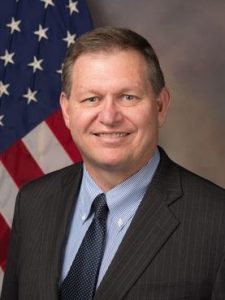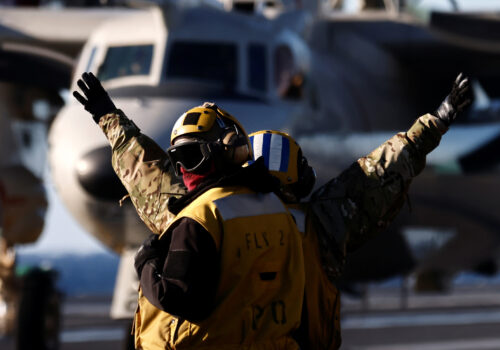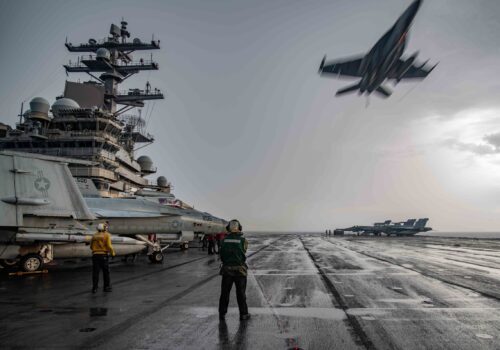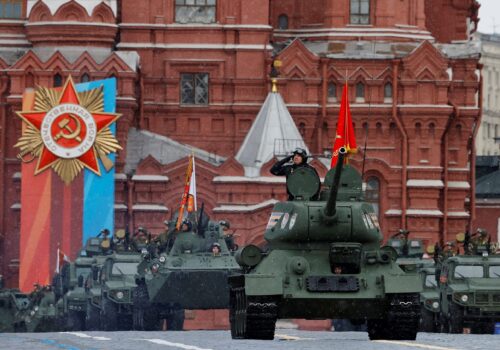Why NATO’s reaction force needs to be rapid to be relevant
Introduction
For years, NATO has fielded a NATO Response Force (NRF), spearheaded of late by a Very High Readiness Joint Task Force, or VJTF. The NRF rotates among nations, but regardless of which one holds the reins, it has never been felt to be up to the task of rapid deployment and employment in times of crisis.1The disabilities and shortfalls of the NRF and VJTF are described in detail by John R. Deni in “Disband the NATO Response Force,” Atlantic Council, October 14, 2020. In a follow-up publication, Deni points out that the new NATO Force Model faces a variety of challenges including whether allies will have sufficient forces at appropriate readiness levels to fulfill their own objectives, whether the SACEUR will still have the authority to “alert, stage, and prepare” allied forces as a crisis emerges, and whether and how the Alliance’s command structure is fit for purpose. See Deni’s “The New NATO Force Model: Ready for Launch?,” NATO Defense College, May 2024. The current crisis in Ukraine, following Russia’s aggression in Georgia, the Donbas, and Crimea, underscores the importance of a credible NATO combat force that can move quickly to reassure allies and deter short-notice Russian offensive actions on NATO territory.2“To strengthen deterrence and defense against Russian aggression,” argues a Center for Strategic and Budgetary Assessments report, “NATO should build and posture additional forces to blunt Russian aggression at the outset of conflict and prevent Russia from rapidly achieving its military objectives.” See Strengthening the Defense of NATO’s Eastern Frontier: Key Insights and Recommendations, Center for Strategic and Budgetary Assessments (CSBA), March 19, 2019, p. 38.
By definition, this force must be air transportable, able to arrive and commence operations within ten days, and thus not an armored or mechanized force arriving overland by rail and road. For decades, NATO fielded this capability in the form of the Allied Command Europe Mobile Force, or AMF. Deactivated a generation ago, the AMF featured many capabilities that are in high demand today. As the Russian Federation threatens to upset the balance of power in the European security space, the time is right to revive the AMF in a new form: the NATO Rapid Reaction Force, or NRRF.
As the Russian Federation threatens to upset the balance of power in the European security space, the time is right to revive the Allied Command Europe Mobile Force in a new form: the NATO Rapid Reaction Force, or NRRF.
The requirement
As the campaign in Ukraine degenerates into a frozen conflict, Russian imperialism and aggression will not recede.3“A wounded, vengeful Russia will remain a threat as long as Vladimir Putin, or like-minded successors, are in power,” Paul Taylor asserts in “The Threat from Russia Is Not Going Away,” Guardian, July 10, 2023. The Russian military will reconstitute to replace its losses and reequip its formations. In the near future, Russian forces could assemble a force to overrun one or more of the Baltic states—NATO’s most threatened territory—with as little as ten to fourteen days of strategic warning.4See Richard D. Hooker Jr., “How to Defend the Baltic States,” Jamestown Foundation, October 2019. At present, these nations are defended by only weak regular forces,5Estonia fields a single active-duty infantry battalion (of a reserve mechanized brigade), while Latvia fields one active-duty mechanized brigade, with each backed up by a reserve light infantry brigade. Lithuania fields two regular brigades (one mechanized and one motorized) and four reserve brigades. Lightly equipped reservists in limited numbers round out these forces. The Baltic states currently possess no tanks or combat aircraft. See The Military Balance, International Institute for Strategic Studies, 2024, 86-87, 111-114. supported by a NATO battalion battle group deployed in each as a tripwire force. Possessing no tanks or airpower and very limited artillery and air defense, the Baltic states would likely fall within a week—well before current NATO reaction forces could intervene.6NATO is moving to replace the NRF/VJTF construct with a new NATO Force Model (see infographic at https://www.nato.int/nato_static_fl2014/assets/pdf/2022/6/pdf/220629-infographic-new-nato-force-model.pdf), with a goal to generate 100,000 “Tier 1” forces available (i.e., ready to move”) in ten days, 200,000 “Tier 2” forces in ten to thirty days, and 500,000 “Tier 3” forces in thirty to 180 days. These will be spearheaded by a 40,000-strong Allied Reaction Force (ARF) with land, sea, and air components. How this new construct will rectify the shortcomings of the NRF/VJTF is, however, unclear as these timelines are extremely ambitious. A highly mobile, genuinely high-readiness organization is needed to fill this capability gap: as one major study put it, “to blunt a Russian invasion and buy time for NATO to respond.”7CSBA study. In 2022, at the Madrid Summit, “all Allies committed to the deployment of additional robust, combat-ready forces on NATO’s eastern flank,” according to a NATO summary (see “US Demonstrates Readiness to Reinforce NATO Battlegroup in Poland,” NATO website, last updated May 15, 2023, https://www.nato.int/cps/en/natohq/news_214629.htm). The goal is “to scale up” from the existing battlegroups to brigade-size units, “where and when required”; see “NATO’s Military Presence in the East of the Alliance,” a NATO web page updated on July 8, 2024. To date, these enhancements have not materialized.
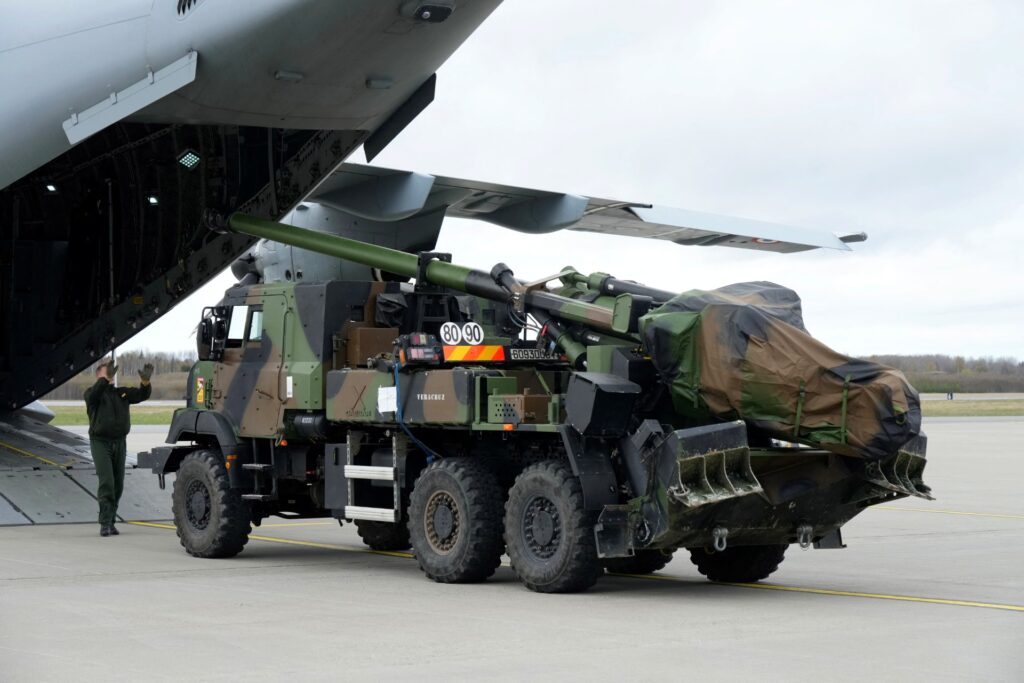
The AMF was in existence from 1960 to 2002, commanded by a major general and command staff with battalion battle groups from fourteen nations. All were air transportable, light infantry (usually parachute) units with organic “enablers” in the form of anti-tank, air defense, artillery, engineer, signal, logistics, chemical, and medical support attachments.8The standard AMF battlegroup included a parachute infantry battalion, anti-tank company, logistics company, and air defense, engineer, signal, chemical, and medical platoons, totaling approximately 1,200 troops. The AMF, however, did not include brigade headquarters. Regularly exercised, though never tested in combat, the AMF was deployed to Albania in 1999 to provide humanitarian assistance to refugees from the Kosovo crisis. Conceptually, the AMF was intended to move rapidly to threatened areas to deter aggression through the presence of NATO soldiers from many nations, ensuring a collective response from across the Alliance should deterrence fail.
A reconstituted NATO Rapid Reaction Force would resemble the AMF in many respects. Many allies maintain high-quality, battalion-sized rapid reaction forces (usually parachute formations) which are capable of moving quickly anywhere within the NATO area of responsibility (AOR) by air. All can be readily task-organized with accompanying enablers that belong to their parent brigades. Already in existence, and fully equipped with high quality soldiers and leaders, these units require only an appropriate command structure, along with regular exercises. (For optimum effect, ammunition and critical supplies can be prepositioned in likely employment locations.) Like NATO’s Striking Force Atlantic (STRIKEFORNATO), the NRRF should report directly to Supreme Allied Commander Europe (SACEUR).The following hypothetical scenario illustrates how such an approach might work.
Scenario: Russia confronts NATO
The date is September 1, 2026. As the war in Ukraine subsided into an uneasy frozen conflict, the Russian leadership ordered the Western Military District to posture for military operations against Estonia, to be spearheaded by elements of the newly reconstituted 1st Guards Tank Army (1GTA).91GTA includes two tank divisions, one motor rifle division, and independent motor rifle brigade plus supporting artillery and other enablers. See David Axe, “Russia’s 1st Guards Tank Army Has Won Its First Battle in Two Years—by Advancing a Mile and Capturing a Half-Dozen Buildings,” Forbes, updated January 31, 2024, https://www.forbes.com/sites/davidaxe/2024/01/30/russias-1st-guards-tank-army-has-won-its-first-battle-in-two-years-by-advancing-a-mile-and-capturing-a-half-dozen-buildings/?sh=44709dfb47b7. The objective was to gain control of eastern Estonia, home to an ethnically Russian population, and to split NATO if possible.10As recently as 1939, only 8 percent of Estonia’s population was ethnically Russian. Following decades of Soviet rule, that figure increased to 25 percent. Citing Estonia’s 2021 Population Census, the European Commission relays that ethnic Russians accounted for 27.4 percent of the population, describing them as mostly settlements of Russian speakers from Russia (22.5 percent), Ukrainians (4.1%), and Belarusians (0.8%); see “Feeling Cornered: An Analysis of the Russian-speaking Minority in Estonia,” European Website on Integration, European Commission, September 4, 2023, https://migrant-integration.ec.europa.eu/library-document/feeling-cornered-analysis-russian-speaking-minority-estonia_en. To the oligarchs and autocrats in Moscow, it was thought unlikely that all thirty-two NATO members would vote to risk direct confrontation with a nuclear-armed Russian Federation over a small slice of NATO territory. The operation was intended to test this proposition.11This scenario is adapted from the author’s “Major Theater War: Russia Attacks the Baltic States,” RUSI Journal, Vol. 166, 2020.
Though mounted in strict secrecy, NATO intelligence services noted clear indicators, including the movement of units, massing of airlift and rail assets, logistics preparations, increased signal traffic, and stepped-up disinformation. What was needed was a credible force, drawn from across the Alliance, which could move quickly to deter aggression and, if necessary, conduct kinetic operations to bolster local host nation forces until follow-on forces could arrive. With Russian aggression assessed as imminent within ten to fourteen days, the North Atlantic Council directed that the NRRF be activated and deployed to Estonia: operating under crisis management procedures, NATO’s primary political decision-making body issued the following political guidance through the Military Committee to SACEUR: Your mission is to deploy military forces as soon as possible to Estonia to support host nation forces in securing their territorial integrity. Lethal force is authorized if necessary to defend NATO forces or host nation territory and noncombatants.
SACEUR and supporting planners quickly turned to the newly established NRRF, formed from the community of rapid reaction formations found throughout NATO. Supported by US and European airlift, the NRRF formed up “on the fly.” Ten days after the “execute” order, a potent force had assembled on the eastern outskirts of Tallinn, including US, French, British, German, Italian, Belgian, Spanish, Dutch, and Polish parachute infantry battalion battle groups, each with their own artillery battery and anti-tank, engineer, air defense, signal, and logistics subunits.12These were the US 2nd Battalion 503rd Parachute Infantry based in Vicenza, Italy; the French 2nd Foreign Legion Parachute Regiment (2e Régiment Étranger de Parachutistes, or 2e REP); the British Army’s 2nd Battalion, Parachute Regiment; the German Fallschirmjäger Regiment-31; the Italian 5th Battalion, 186th Parachute Regiment “Folgore”; the Belgian 3rd Parachute Battalion; the Spanish 1st Parachute Battalion Bandera “Roger de Flor”; the Dutch 11th Parachute Battalion; and the Polish 6th Parachute Battalion. All are able to deploy within seven days of being alerted. Other national rapid reaction forces may also be called upon, such as the Portuguese 3rd Parachute Battalion, the Czech 43rd Parachute Regiment, and the Greek 2nd Parachute Regiment. These were accompanied by brigade-level headquarters from the US, UK, and Poland, and commanded by a division-level “assault command post” from Germany’s Division Schnelle Kräfte (Rapid Forces Division), dual-hatted as NRRF commander and staff.13Specifically, they were the US 173rd Airborne Brigade based in Vicenza, Italy, the UK 16th Air Assault Brigade, and the Polish 6th Airborne Brigade “Sosabowski.” These brigade headquarters can deploy a command and control node (C2) within seven days of alert notification or less. The US 82d Airborne Division also maintains a “flyaway” division-level C2 node that can deploy on forty-eight hours’ notice. The US Southern European Task Force, a two-star headquarters based at Vicenza, is another possible candidate.Attack helicopters and a Multiple Launch Rocket System (MLRS) battery from US Army Europe were also sent. Aircraft from across NATO provided fighter and airlift support from bases outside Estonia.14These complex air operations were coordinated through NATO’s Allied Air Command at Ramstein Air Base in Germany.
The particular mix of forces sent to Estonia was intended to convey a clear signal to Russian decision-makers. On the one hand, the force represented NATO’s strongest members and some of the best combat troops available, reinforcing NATO messaging that the Alliance meant business and would fight to defend a member state. On the other, the NRRF posed no offensive threat, reassuring Russian leaders that cross-border operations were unlikely.15Each NATO battalion battle group possessed organic anti-tank units, in addition to NATO attack helicopters based at the international airport in Tallinn. These systems included the portable US fire-and-forget Javelin, the tube-launched, optically tracked, and wire-guided (TOW) heavy anti-armor system, the UK NLAW missile system, the French Apilas, the Swedish Carl Gustav, the Italian Spike missile, and the Euromissile-produced HOT wire-guided system used by French and German forces. NATO fighters flying close air support also provide an anti-tank capability. Organic air defense weapons include the US FIM-92 Stinger, French Mistral, and UK Starstreak.
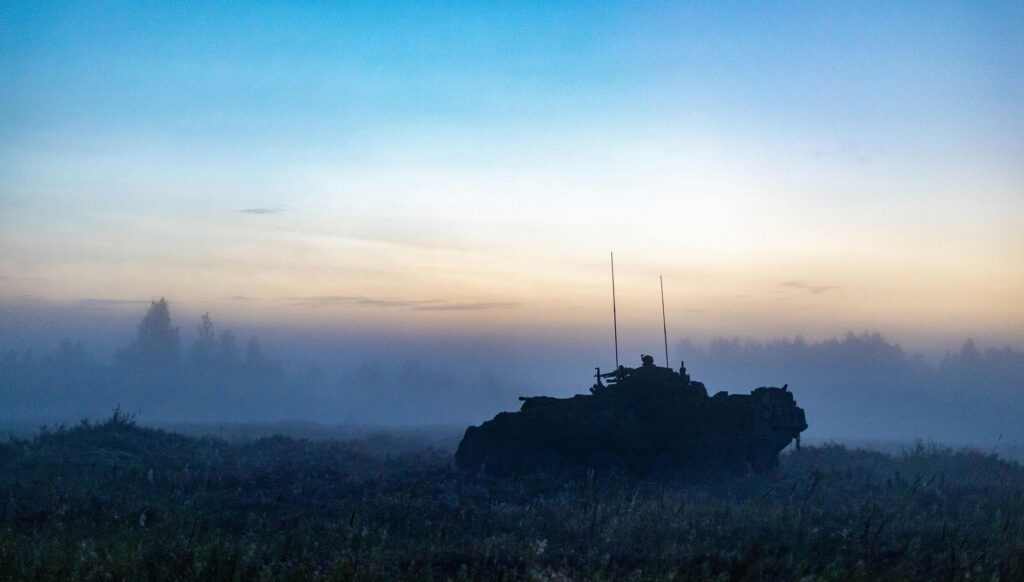
At the outset, the ability of Estonia’s small defense forces to respond to Russian incursions was limited. For several days, Russian plainclothes paramilitaries and intelligence officers were able to organize and move into ethnically Russian enclaves in the eastern part of the country.16Ethnically Russian Narva attempted to declare independence as the “Prinovarian Republic” in 1991 and held a referendum on proposed autonomy in 1993, both of which were declared illegal by the Estonian government. About 80 percent of Narva’s residents are ethnic Russians, and many of them have Russian passports. At the same time, the international media reported violent demonstrations by ethnic Russians living in the capital and in Narva, apparently orchestrated by the Russian government, demanding reintegration with the Russian Federation. Just inside Russian territory, an ominous buildup of armored and mechanized forces, combat aircraft, artillery, and logistics dumps could be seen, clearly meant to deter a NATO response.17Russian air defense in the Western Military District is formidable. Should deterrence fail and it be used in NATO airspace in this scenario, NATO suppression of enemy air defenses (SEAD) from air, naval, and land platforms would likely be employed. Estonian officials moved quickly to mobilize the Kaitseliit, the reserve army (as did Latvia and Lithuania with theirs), but that would take time and could not in any case cope with the threat. Meanwhile, NATO moved to fill the void.
The Alliance had weathered the first and most dangerous challenge, the political decision to respond with force to the Russian threat. The introduction of strong forces from across NATO into Estonia meant that reestablishing stability and host-nation control in eastern Estonia was now likely—if NATO held firm. But it also constituted another critical decision point for Russia. As the NRRF arrived, with the VJTF to follow, it became clear that Russian paramilitaries and special forces would not be enough to destabilize the Estonian government. Would Moscow escalate by introducing regular forces as it had done in Georgia, Crimea, and eastern Ukraine? Such forces could be clearly seen, massing in the Leningrad Military District close to the Estonian border. If these forces were used, the crisis might rise to a full-blown war, even raising the specter of nuclear weapons.
Even as rapid reaction forces moved into Estonia, NATO planners wrestled with the next steps. Potential Russian naval operations in the Gulf of Finland and air defense over Estonia and the Baltic region demanded appropriate measures. No one wanted a major military confrontation with Russia. Yet prudence dictated a measured response that addressed all dimensions of the unfolding crisis.
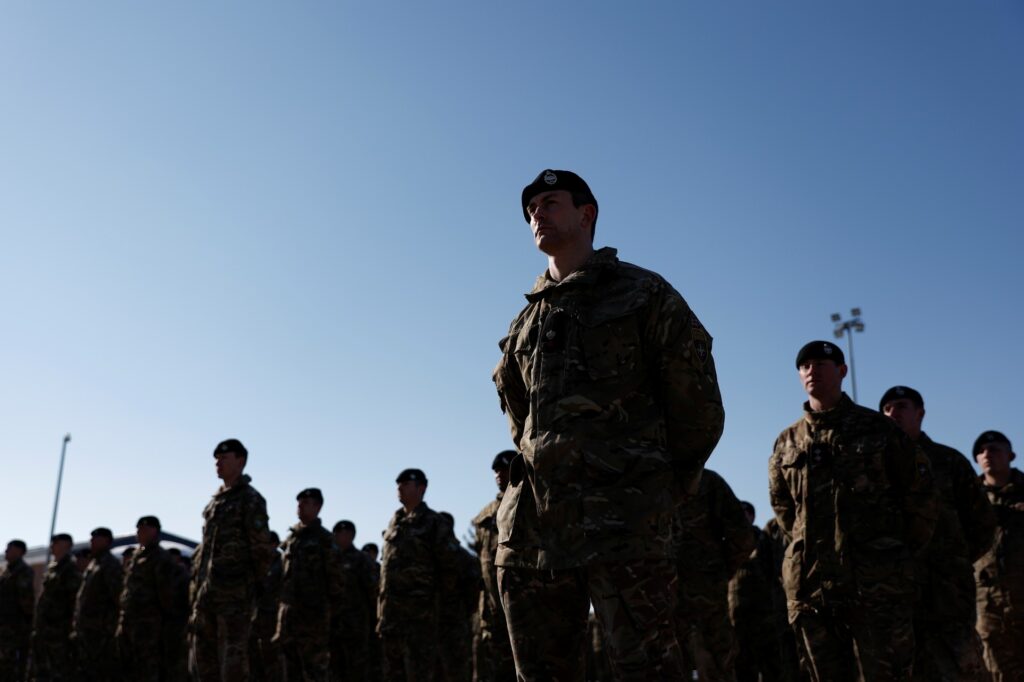
By mid-September, the NRRF was firmly established on the ground as a division-sized joint task force, headquartered in Rakvere (25 kilometers to the east of Tallinn), with one US-led brigade in Jõhvi controlling the road and rail nexus west of Narva; one Polish-led brigade in Võru, to forestall any Russian incursion south of Lake Peipus; and the UK-led brigade centrally positioned in Tartu and able to respond in either direction. The Estonian 1st Mechanized Brigade, an active-duty formation, dug in as the NATO reserve at Tapa, screening the capital of Tallinn, along with the UK-led eFP battle group. The 2nd Infantry Brigade (a reserve group) continued to mobilize with a mission to defend the capital itself. NATO fighter aircraft stepped up air patrols over the Baltic Sea and the Baltic republics’ combined airspace, while a strong NATO naval task force moved into the Baltic Sea, positioned to mask Russia’s Baltic Fleet in its anchorage at Kaliningrad. At D+10, the commander and forward elements of NATO’s Allied Rapid Reaction Corps arrived to provide command and control for the NRRF and follow-on forces.18According to a former NATO LANDCOM commander, though NATO has nine “rapid deployment” corps headquarters, the UK-based ARRC is the only fully staffed NATO corps headquarters based in Europe that is optimized for rapid air movement on short timelines. D+10 refers to ten days later.
At this point the Russian leadership blinked. With five NATO brigades now on the ground, with strong air support, the chances of a successful coup de main by Russian forces evaporated. NATO intelligence services reported the return to barracks of mobilized forces, accompanied by Russian accounts of a successful “snap” exercise. By year’s end the NRRF had redeployed to its home stations as the crisis abated.
Assessment
A NATO Rapid Reaction Force as described above would offset many of the problems associated with the VJTF and NRF, which are much slower to respond.19For 2024, the UK 7th Light Mechanized Brigade is NATO’s designated VJTF. As a mechanized force it must come by sea and could not expect to arrive in the area of operations in less than four weeks. Entirely air transportable, its prospective units are already in existence, highly trained and ready, composed of high-quality soldiers, and able to deploy at battalion-level on very short notice.20The battalion battle groups described herein can each be airlifted from home station to the designated area of operations in eighteen C-17 sorties or equivalents. Airlift units can typically generate one sortie per aircraft per day in the scenario described. Troops with personal equipment can also be flown by chartered commercial air. NATO airlift to move these formations is substantial; a partial list includes: Germany (forty-three A400s and three C-130s); France (twenty-one A400s and sixteen C-130s); UK (twenty-two A400s and eight C-17s); Poland (seven C-130s); Spain (thirteen A400s); Netherlands (four C-130s); Belgium (six A400s); and Italy (twenty-one C-130s and twelve C-27s). NATO’s strategic airlift capability, with three C-17s, is based in Hungary. The United States maintains a squadron of twelve C130-J aircraft at Ramstein Air Base and can deploy a significant number of C-17s from bases in the eastern United States on short notice as well. See The Military Balance, International Institute for Strategic Studies, 2023. Composed of units from NATO’s strongest members, its deterrent value is clear. Though light infantry, this composite force would pack a substantial anti-armor punch, as well as organic artillery, logistic, and engineering support.21This includes nine artillery batteries, nine heavy mortar platoons, and organic anti-tank and air defense systems. Thoroughly equipped with effective anti-tank and man-portable air defense weapons, and supported by strong NATO air forces, the NRRF along with in-place forces could successfully defend against 1GTA’s first echelon forces, buying time and attriting Russian forces as the VJTF (or the ARF, which will replace it) mobilizes and deploys.221GTA includes two tank divisions, one motor rifle division, and independent tank and motor rifle brigades, plus supporting artillery and other enablers. Its performance in Ukraine has been mixed at best. See Axe, “Russia’s 1st Guards Tank Army Has Won.” Little or no start-up costs are needed, as these units are fully manned and equipped. An added benefit is that NATO airborne forces are among the most interoperable in the Alliance, as they conduct frequent exchanges and are organized and equipped along similar lines. As with the AMF in former times, semiannual command post exercises and annual participation in larger-scale NATO field exercises can keep such an NRRF honed and ready.23An important consideration is that deployment costs for the NRRF should be borne by the entire Alliance, and not on a “costs fall where they lie” basis. While the owning nations will pay for the upkeep of what are after all national assets, the financial burden should be shared across the Alliance when deployed by the NAC, as argued by Col. Jan Abts: “The financial burden for a political decision made by [all NATO] nations should not be shouldered only by those nations which actually commit troops.” See Abts, “NATO’s Very High Readiness Joint Task Force,” NATO Defense College Research Division, February 2015.
Today, NATO faces a challenging and dangerous adversary and deterrence is more than ever at a premium. The ability to move quickly and in strength—significantly faster than current reaction forces—is clearly needed and provides strategic options that NATO now lacks. Fortunately, the resources are already in place to form a Rapid Reaction Force to address this capability gap. Now is the time to act—before the next crisis confronts the Alliance.
About the author
Related content
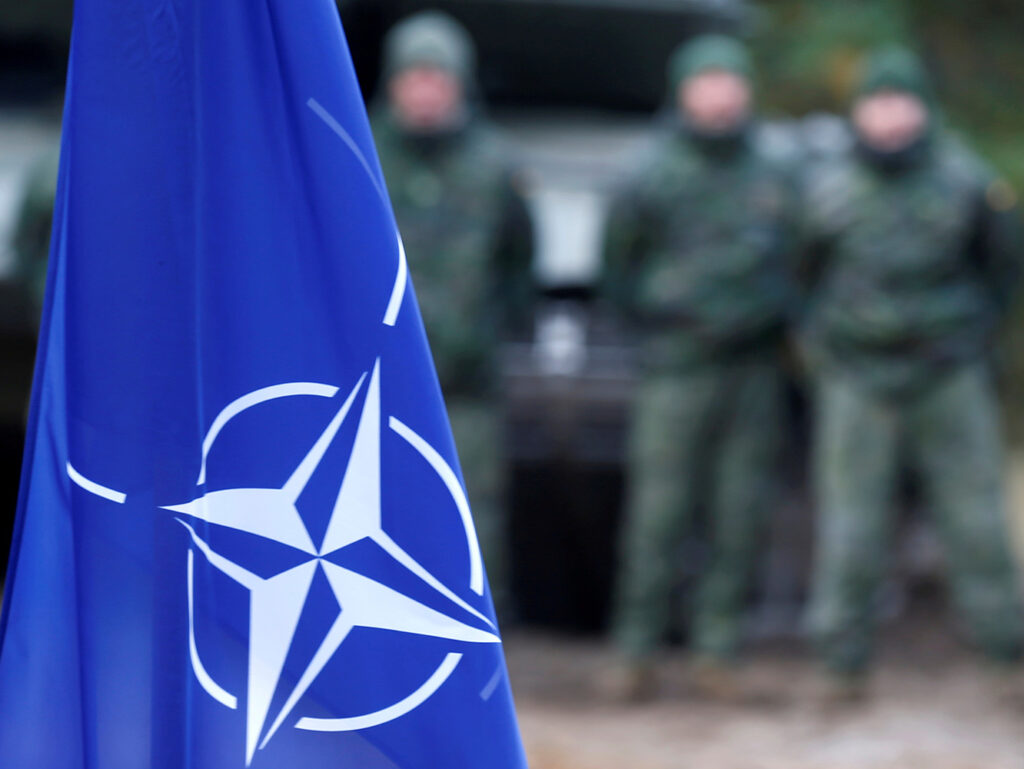
The Transatlantic Security Initiative, in the Scowcroft Center for Strategy and Security, shapes and influences the debate on the greatest security challenges facing the North Atlantic Alliance and its key partners.
Image: Polish and German paratroopers shake hands before taking part in a joint drop over Poland. NATO photo
